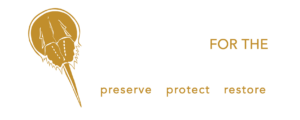The Diamondback Terrapin Survey, initiated in 2019, engages volunteers to count basking terrapin in the Inland Bays. Diamondback terrapins are an ecologically and culturally important species for the Inland Bays. Along the Atlantic Coast, terrapin populations have declined dramatically, and face many serious threats from habitat loss, vehicle and boat collisions, increased predation, and drowning in fishing gear. In the Inland Bays, one source of morality is crossing Coastal Highway, which disproportionately kills adult females in search of nesting habitat. State Parks installed the turtle-proof fence in 2005 as a result of Center surveys documenting the scale of this mortality event.
Terrapins can live for 25-30 years and can continue to reproduce for two decades. They need sandy beach habitat, easy access to clean brackish water, and healthy salt marshes. But, these habitats are becoming more rare as shorelines are hardened with bulkheads and stone. As an alternative, the Center recommends installing a “living shoreline” that can reduce wave energy, trap sediment, and filter runoff, while maintaining (or increasing) beach or marsh habitat. Such habitat can protect diamondback terrapin populations by providing areas for feeding and growth.
Currently, no long-term population data exists for terrapins in the Inland Bays. The first step to protection is building a fundamental understanding of terrapin abundance, how that abundance fluctuates naturally between years, and the spatial distribution of terrapins within the bays. The results of this survey can provide optimal locations for terrapin enhancement projects such as beach nesting habitat creation or derelict crab pot removal efforts.
